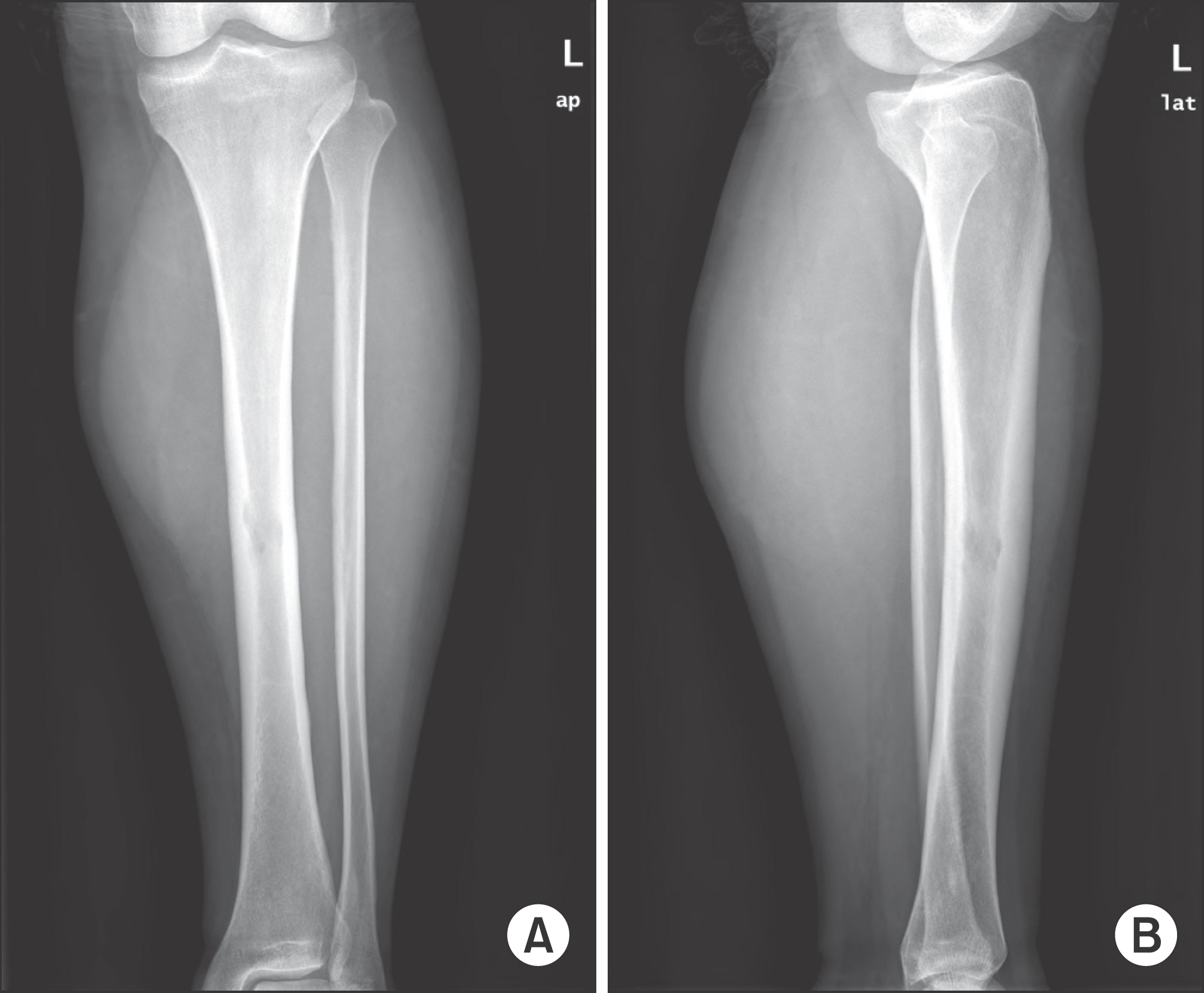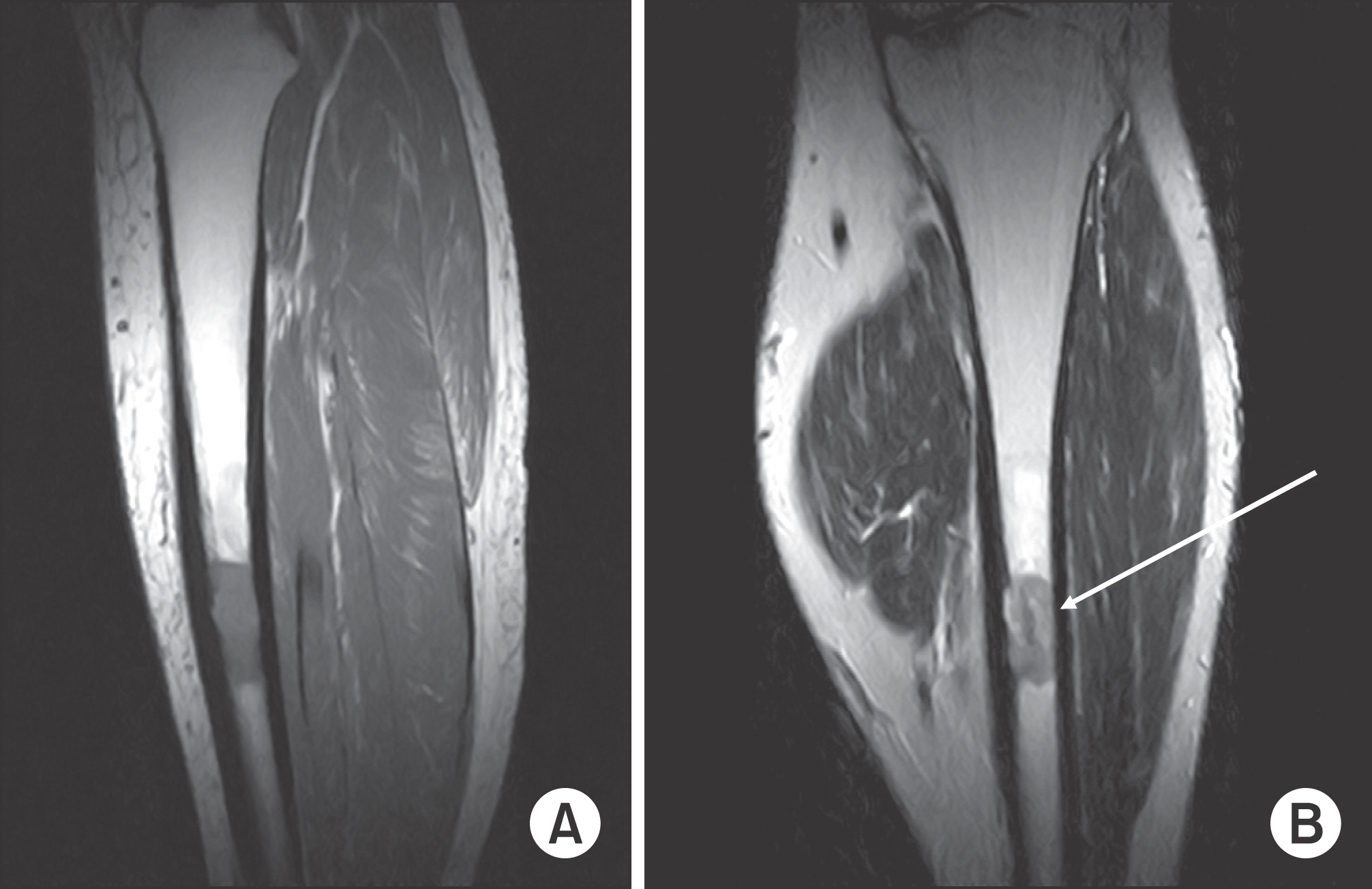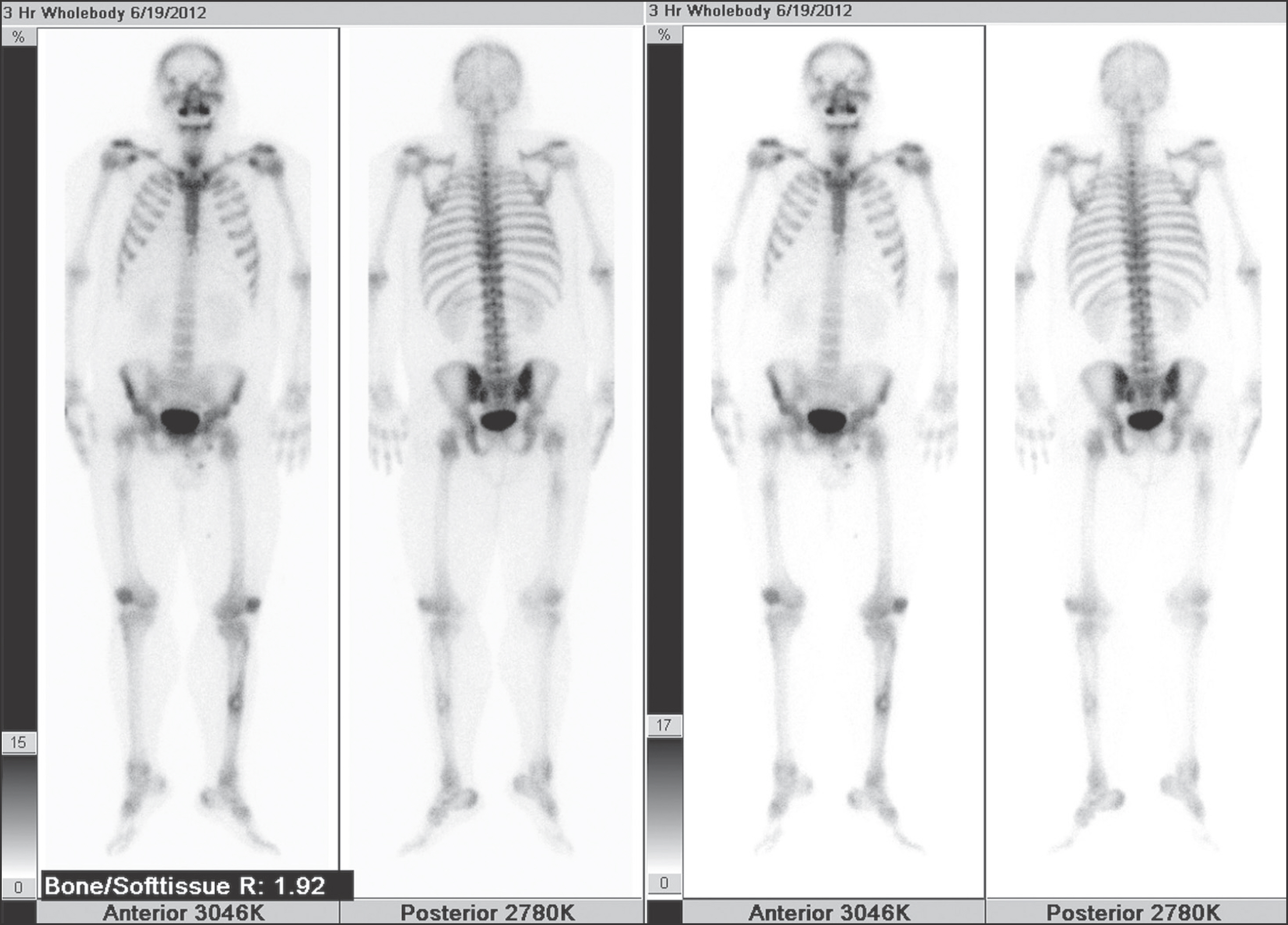J Korean Bone Joint Tumor Soc.
2014 Jun;20(1):32-35. 10.5292/jkbjts.2014.20.1.32.
Rosai-Dorfman Disease as a Solitary Lesion of the Tibia
- Affiliations
-
- 1Department of Orthopedic Surgery, Korea Cancer Center Hospital, Seoul, Korea. chowanda@naver.com
- 2Department of Pathology, Korea Cancer Center Hospital, Seoul, Korea.
- KMID: 1707763
- DOI: http://doi.org/10.5292/jkbjts.2014.20.1.32
Abstract
- Rosai-Dorfman disease (RDD) is an idiopathic histioproliferative disorder of lymph node and extranodal site. Bone involvement is very rare. We report a case of extranodal RDD of the tibia in 32-year old male. The patient presented with pain with no evidence of lymphadenopathy. Clinico-radiologic diagnosis was metastatic carcinoma or Langerhans cell histiocytosis, but, histopathologic examination confirmed the diagnosis with RDD. We performed curettage on the osteolytic lesion of tibia. In South Korea, there was no report about RDD of the extremity and we want to report this case with review of the literature.
Keyword
MeSH Terms
Figure
Reference
-
References
1. Demicco EG, Rosenberg AE, Björnsson J, Rybak LD, Unni KK, Nielsen GP. Primary Rosai-Dorfman disease of bone: a clinicopathologic study of 15 cases. Am J Surg Pathol. 2010; 34:1324–33.2. Lai KL, Abdullah V, Ng KS, Fung NS, van Hasselt CA. Rosai-Dorfman disease: presentation, diagnosis, and treatment. Head Neck. 2013; 35:E85–8.
Article3. George J, Stacy G, Peabody T, Montag A. Rosai-Dorfman disease manifesting as a solitary lesion of the radius in a 41-year-old woman. Skeletal Radiol. 2003; 32:236–9.
Article4. Orvets ND, Mayerson JL, Wakely PE Jr. Extranodal Rosai-Dorfman disease as solitary lesion of the tibia in a 56-year-old woman. Am J Orthop (Belle Mead NJ). 2013; 42:420–2.5. Shin BJ, Lee JC, Nam JS, et al. Rosai-Dorfman disease occurred in epidural space of the thoracic spinal canal. J Korean Soc Spine Surg. 2006; 13:64–8.
Article6. Tripathy K, Misra A, Sahu AK, Patnaik K. Extranodal Rosai-Dorfman disease in a carpal bone. Indian J Orthop. 2012; 46:487–9.
Article7. Rittner RE, Baumann U, Laenger F, Hartung D, Rosenthal H, Hueper K. Whole-body diffusion-weighted MRI in a case of Rosai-Dorfman disease with exclusive multifocal skeletal involvement. Skeletal Radiol. 2012; 41:709–13.
Article
- Full Text Links
- Actions
-
Cited
- CITED
-
- Close
- Share
- Similar articles
-
- A Case of Cutaneous Rosai-Dorfman Disease Enlarged in Size after Punch Biopsy
- Rosai-Dorfman Disease in the Neck and Subglottis
- A Case of Rosai-Dorfman Disease Limited to the Lip
- Rapidly Growing Cutaneous Rosai-Dorfman Disease Successfully Treated with Surgical Excision
- Cutaneous Rosai-Dorfman Disease Confused with Vascular Mass





